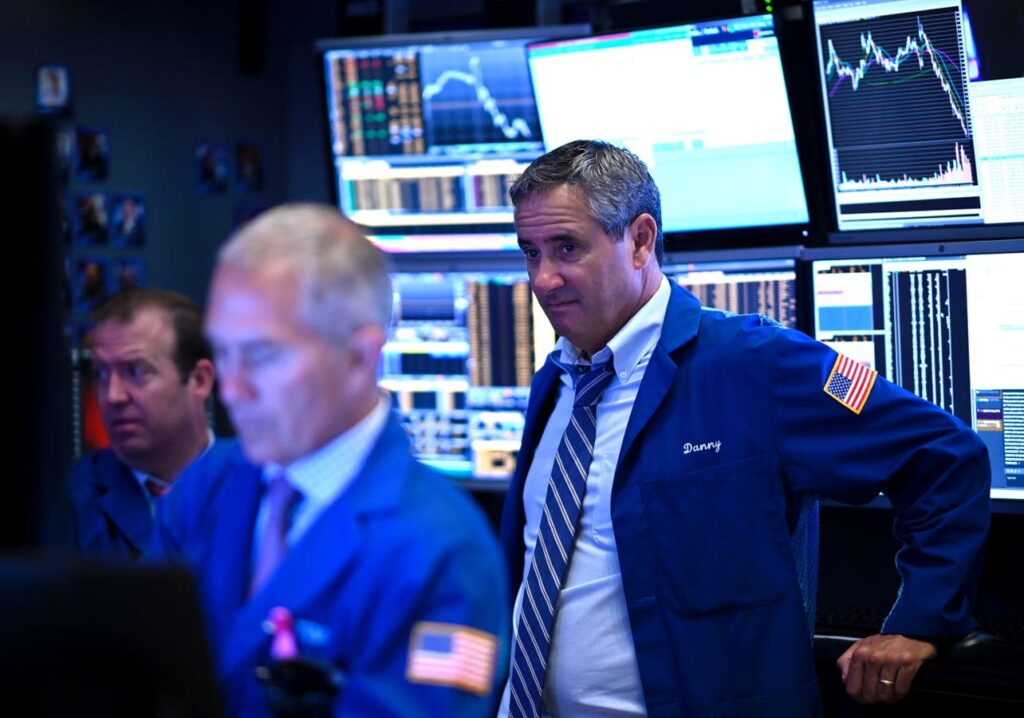Stagflation risks are rising. U.S. consumer confidence has recently fallen while consumer inflation rates remain elevated. The prospects for Q1 2025 U.S. gross domestic product are currently negative, while year-on-year inflation rates are above the Fed’s 2% target.
Tariffs present inflationary risks, but tariff uncertainty risks appear recessionary—and could be deflationary. Forthcoming U.S. tariff announcements on April 2 present additional significant downside risks for equity, bond, and commodity markets.
Weak Growth Outlook And Stagflation Prospects
In the 1970s, stagflation was a mix of deep recession and double-digit inflation. However, a more muted scenario of falling growth and elevated inflation is becoming an increasingly plausible scenario in the current economic environment.
U.S. real GDP growth decelerated in Q4 2024 to 2.4%, following a strong 3.1% in Q3 2024. March Consumer Confidence and Consumer Sentiment fell sharply, while monthly February Personal Consumption Expenditures inflationary pressures accelerated.
Because U.S. consumer confidence weakened significantly in February and March, it has weighed on the U.S. growth outlook. The Atlanta Fed’s GDPNow is a real-time measure of forecasted growth based on the latest economic releases, and the GDPNow for Q1 2025 reflects growth is likely to be –2.8% as of March 28. Furthermore, trade and tariff policies present further uncertainty and downside risks.
March data will make or break the Q1 outlook. Plus, some Q1 inventory restocking could ameliorate some downside risks to this figure. However, with such a negative Q1 2025 GDPNow, the risks of recession have clearly risen.
On the upside for the economy, the U.S. labor market is solid, with an unemployment rate of only 4,1%, fewer than 1.9 million continuing jobless claims, and over 7.7 million open jobs. U.S. consumer debt delinquencies were around 3.6% in Q4.
Despite a strong labor market, weakening consumer confidence is weighing on growth.
Falling Consumer Confidence Raises Stagflation Risks
Consumer confidence and sentiment are critical for the U.S. economic outlook because consumption is the lion’s share of U.S. economic growth. In fact, almost 70% of GDP growth in Q4 2024 was personal consumption.
In the Conference Board’s Consumer Confidence Index, the present situation and expectations series fell in March. The headline index fell to 92.9 from 100.1 in February. Meanwhile, the present situation series fell to 134.5 from 138.1 in February. However, the expectation series fell sharply to 65.2 from 74.8 in February. Most importantly, the expectations series is now at the lowest level in 12 years and below 80, which is often a signal of a potential future recession. The deterioration of this series has been rapid since the expectations series was 93.7 in November.
Meanwhile, the final March University of Michigan Index of Consumer Sentiment fell to 57 from 64.7 in February. The outlook series had a bigger impact on the decline in the headline consumer sentiment series since the outlook fell sharply to 52.6 from 64 in February, while the present series fell more modestly to 63.8 from 65.7.
Inflation Presents Stagflation Risks For Fed Policy
Year-on-year consumer inflation rates are elevated. While the Consumer Price Index saw decelerations in year-on-year annual rates for total and core CPI, the year-on-year core PCE inflation rate accelerated for February.
February year-on-year consumer inflation rates were 2.8% for the total CPI, 3.1% for core CPI, 2.5% for total PCE, and 2.8% for core PCE.
Total year-on-year CPI and PCE consumer inflation rates are likely to fall close to the Fed’s 2% target in 2025. While FOMC projections imply only two rate cuts in 2025, Prestige Economics expects three 0.25% rate cuts. Plus, even more cuts are likely if inflation or growth slows.
Prestige Economics expects the next Fed rate cut on June 18, and the odds of a June 18 Fed rate cut of at least 0.25% were 78.4% as of March 31 at 9:11 a.m. ET.
Tariff Risks Are Stagflation Risks
Falling consumer confidence, the prospects of negative growth, and elevated inflation reveal significant stagflation risks, which would be the worst of both worlds for the U.S. economy and the future of Fed policy.
The Fed is poised to cut interest rates, especially if inflation eases and job gains slow. And if tariff risks remain elevated, the Fed may need to cut rates significantly more than is currently priced into financial markets.
However, if growth slows but inflation remains elevated, the Fed may struggle to implement more accommodative monetary policies to support confidence and buttress growth.
There were a lot of positive data releases last week. However, they were not strong enough to materially reduce the potential for a contraction in Q1 2025 GDP growth.
This week, non-farm payrolls are likely to be positive, with the potential for a modest slowing from February. A modest rise in the unemployment rate also seems like if the Household Survey reflects more people reporting being unemployed, which could be a function of fewer people having difficulty finding jobs despite high payrolls and job openings.
Tariff risks present the most significant downside potential for financial markets in the week ahead, which means the upcoming April 2 U.S. tariff announcements could add to the threat of stagflation.
Read the full article here

